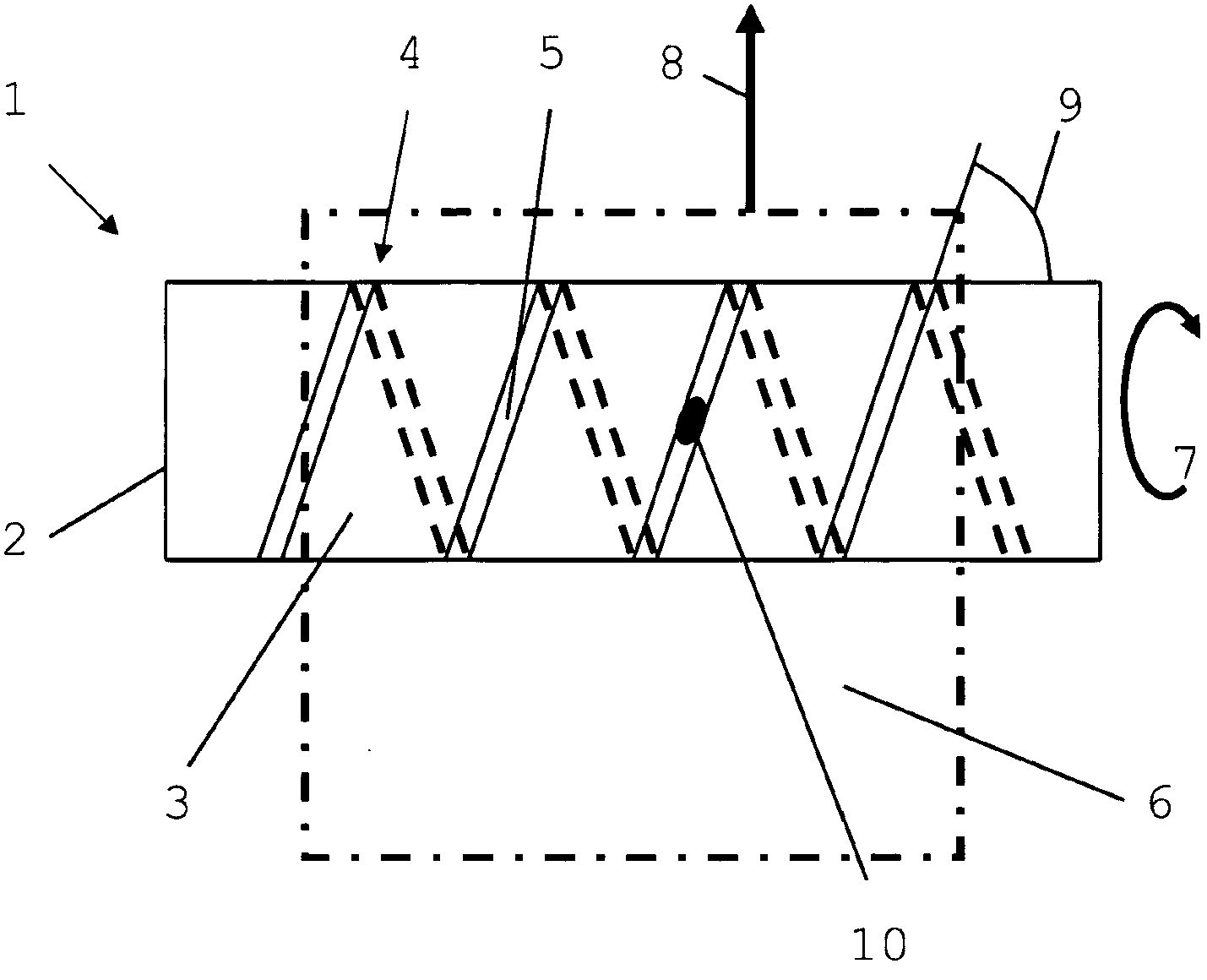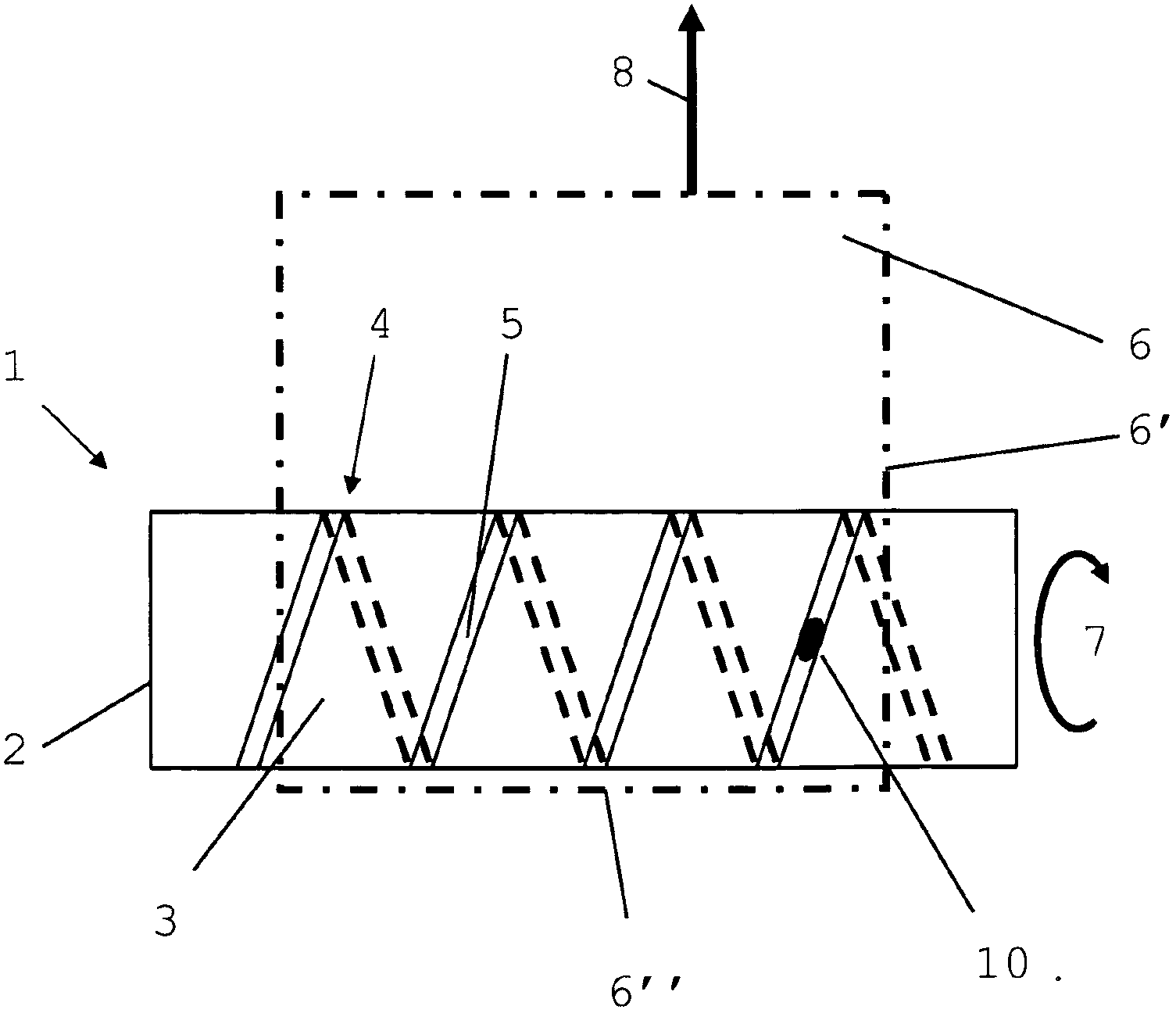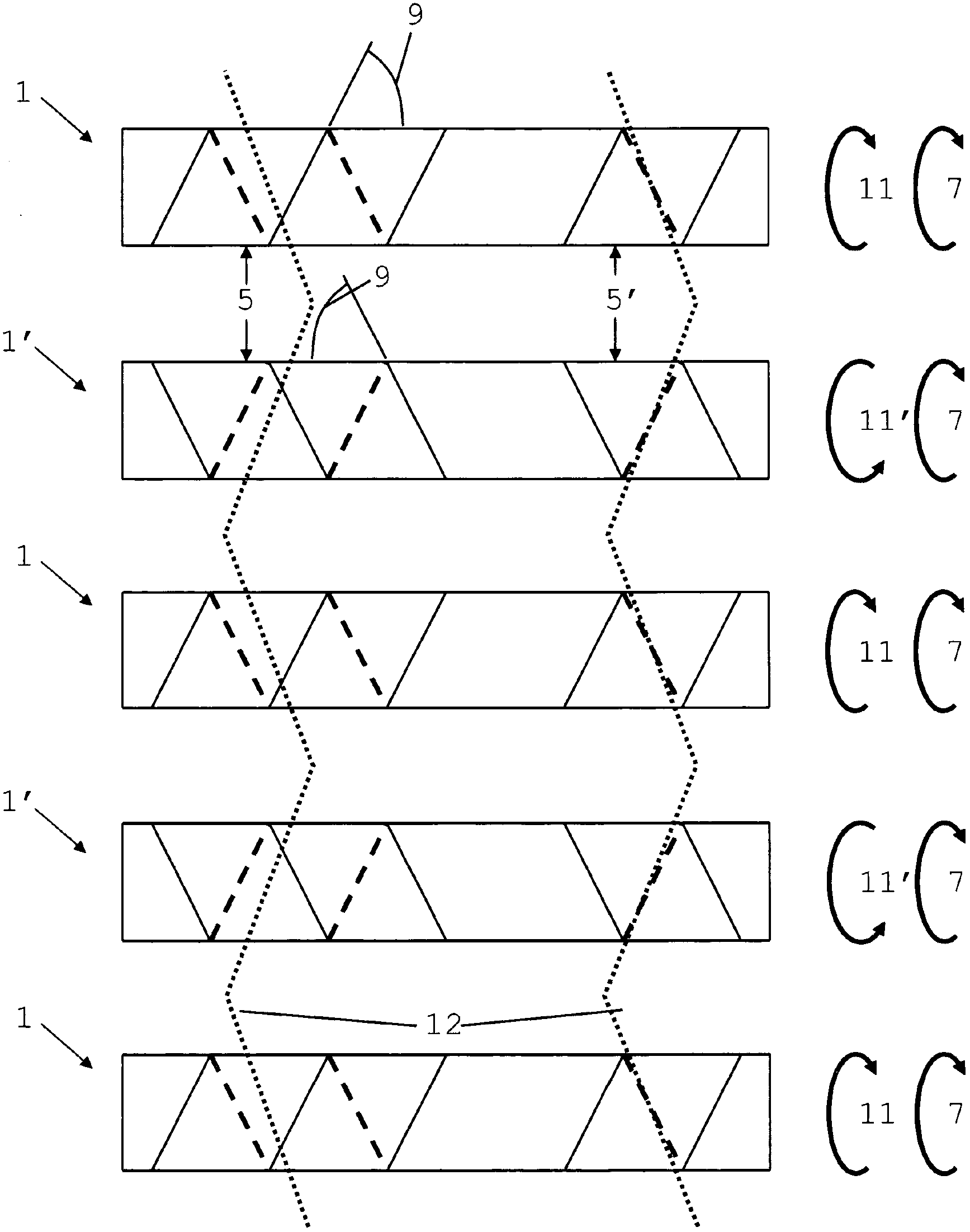Method for removing substrate layers
A substrate and bottom surface technology, applied in the direction of electrical components, semiconductor/solid-state device manufacturing, circuits, etc., can solve problems such as unfavorable crawling characteristics and poor crawling characteristics
- Summary
- Abstract
- Description
- Claims
- Application Information
AI Technical Summary
Problems solved by technology
Method used
Image
Examples
Embodiment Construction
[0086] exist Figure 1A A drum 1 with a thread structure 4 is schematically shown in . The drum 1 is designed as a cylinder and has a base 2 and sides 3 . Other features, such as the axis on which the drum 1 is rotatably mounted and possibly present drive elements, etc. are not shown.
[0087] The thread structure 4 is located on the side 3 . The portion of the thread formation that is blocked by the drum 1 is shown as a dotted line. According to FIG. 1 , the thread structure 4 has a continuous thread line 5 .
[0088] During the transport of the substrate 6 (shown as a dotted line), the drum 1 is rotated in the direction of rotation 7 . Here too, the conveying direction 8 is formed. The conveying direction is directed parallel to the bottom surface 2 of the drum 1 . In the plan view shown, the thread line 5 forms a lead angle 9 with the side face 3 instead of pointing in the conveying direction 8 . In the figure shown, the lead angle 9 is approximately 70°.
[0089] A...
PUM
 Login to View More
Login to View More Abstract
Description
Claims
Application Information
 Login to View More
Login to View More - R&D
- Intellectual Property
- Life Sciences
- Materials
- Tech Scout
- Unparalleled Data Quality
- Higher Quality Content
- 60% Fewer Hallucinations
Browse by: Latest US Patents, China's latest patents, Technical Efficacy Thesaurus, Application Domain, Technology Topic, Popular Technical Reports.
© 2025 PatSnap. All rights reserved.Legal|Privacy policy|Modern Slavery Act Transparency Statement|Sitemap|About US| Contact US: help@patsnap.com



